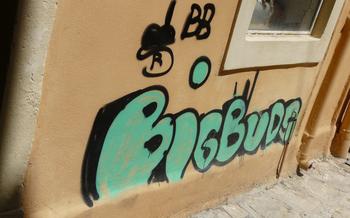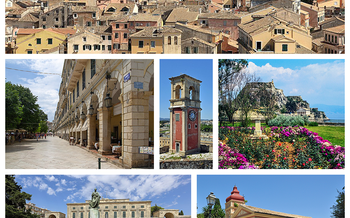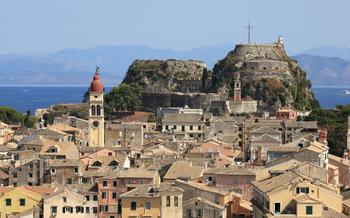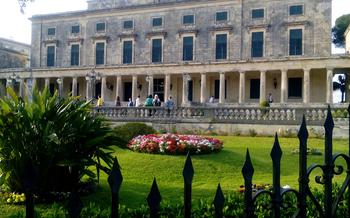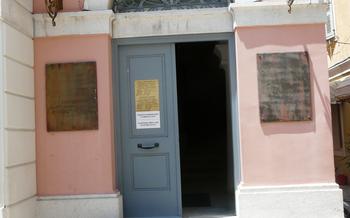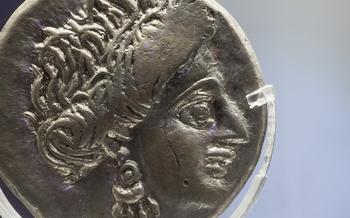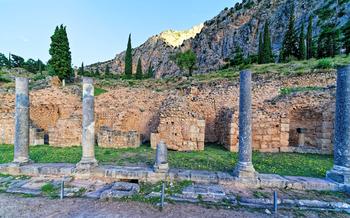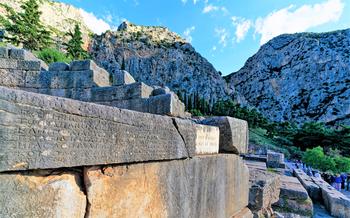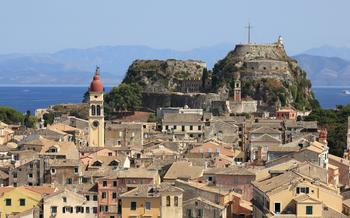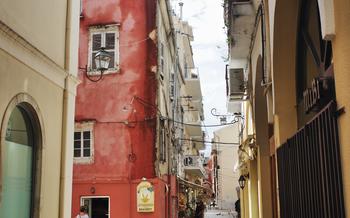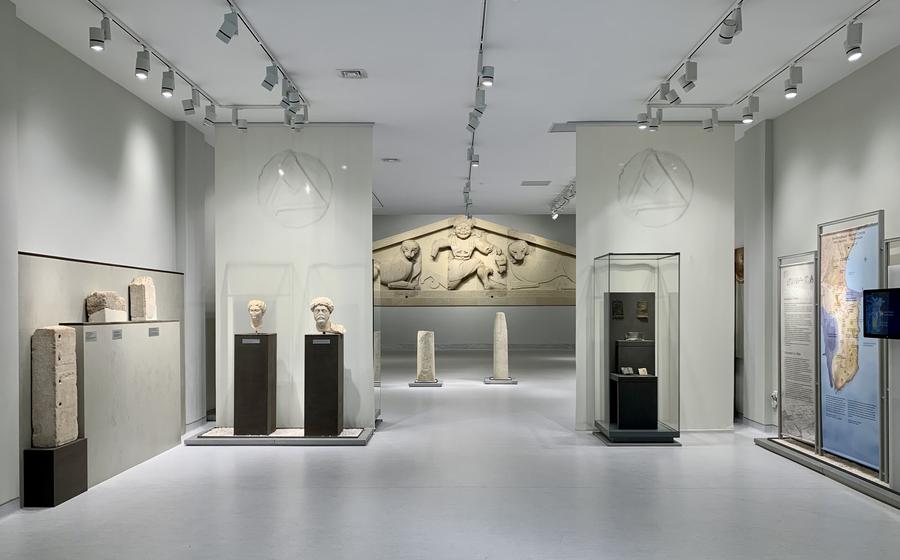
Corfu Archaeological Museum
- Corfu Archaeological Museum: A Treasure Trove of Ancient Civilizations
- A Journey Through Time: The Museum's History
- Must-See Artifacts: Highlights of the Collection
- Thematic Sections: Exploring Different Eras
- Interactive Displays: Bringing History to Life
- Temporary Exhibitions: A Dynamic Showcase
- Research and Conservation: Behind the Scenes
- Educational Programs: Engaging Visitors of All Ages
- Location and Transportation: Getting There
- Nearby Attractions: Exploring Corfu's Treasures
- Local Cuisine: A Taste of Corfu's Flavors
- Shopping in Corfu: Unique Souvenirs and Crafts
- Festivals and Events: Experience Corfu's Cultural Side
- Insider Tip: Discover Hidden Gems
Corfu Archaeological Museum: A Treasure Trove of Ancient Civilizations
The Corfu Archaeological Museum stands as a testament to the island's rich cultural heritage, housing a vast collection of artifacts that span from prehistoric times to the Byzantine era. Established in 1967, the museum has played a pivotal role in preserving and showcasing Corfu's archaeological treasures, offering visitors a glimpse into the island's fascinating past.
Among its notable highlights are the iconic Gorgon Pediment, a magnificent sculpture from the Temple of Artemis, and the Lion of Menecrates, an impressive statue that symbolizes strength and courage. The museum also houses the Kanoni Lion, an ancient sculpture that has become an iconic symbol of Corfu.
Beyond these star attractions, the museum's thematic sections provide a comprehensive exploration of Corfu's history and culture. From the earliest traces of human habitation during the prehistoric period to the flourishing Classical era, the influence of the Roman Empire, and the rich legacy of the Byzantine period, each section offers a unique perspective on the island's diverse past.
A Journey Through Time: The Museum's History
The Corfu Archaeological Museum's rich history mirrors the island's cultural evolution. Established in the late 19th century, it initially housed a modest collection of artifacts from various archaeological sites across Corfu. Over the years, the museum underwent significant expansion and renovations to accommodate its growing collection and provide a more comprehensive representation of the island's rich cultural heritage.
In the early 20th century, the museum expanded its collection through excavations conducted by the Archaeological Society of Athens, uncovering valuable artifacts that shed light on Corfu's ancient past. The museum's collection further expanded in the 1960s and 1970s, thanks to systematic excavations and donations from private collectors.
Recent developments include the addition of new galleries and the renovation of existing ones, creating a more modern and visitor-friendly environment. The museum's ongoing commitment to research and conservation ensures that its collection remains relevant and accessible to visitors, preserving Corfu's cultural legacy for future generations.
The museum's future plans include the development of new educational programs, the digitization of its collection, and the organization of temporary exhibitions that explore various aspects of Corfu's history and culture, further enhancing the museum's role as a dynamic cultural institution.
Must-See Artifacts: Highlights of the Collection
The Corfu Archaeological Museum houses a remarkable collection of artifacts that tell the story of the island's rich history and cultural heritage. Among the must-see highlights of the collection are the following:
-
The Gorgon Pediment: This iconic sculpture from the Temple of Artemis dates back to the 6th century BC and depicts the mythical creature Medusa with her two sisters. The intricate details and expressive faces of the Gorgons make this a captivating work of art.
-
The Lion of Menecrates: This impressive statue of a lion dates back to the 7th century BC and was dedicated to the god Menecrates. The lion is depicted standing on a pedestal, with its powerful muscles and fierce expression conveying strength and authority.
-
The Kanoni Lion: This ancient sculpture of a lion dates back to the 4th century BC and was discovered in the Kanoni district of Corfu. The lion is depicted seated on its haunches, with its head turned to one side and a serene expression on its face. The lion is believed to be a symbol of Corfu's strength and resilience.
These are just a few of the many remarkable artifacts on display at the Corfu Archaeological Museum. Each artifact offers a glimpse into the island's past, showcasing the artistic and cultural achievements of the civilizations that have shaped Corfu's unique identity.
Thematic Sections: Exploring Different Eras
The Corfu Archaeological Museum is divided into various thematic sections, each showcasing artifacts and exhibits from different periods of the island's rich history.
Prehistoric Corfu
This section takes visitors back to the earliest days of human habitation on the island, with artifacts dating from the Paleolithic and Neolithic periods. Visitors can see tools, weapons, and pottery that provide a glimpse into the lives of Corfu's earliest inhabitants.
The Classical Period
Corfu's golden age is represented by a collection of sculptures, pottery, and jewelry from the Classical period (5th to 4th centuries BC). Highlights include the Gorgon Pediment from the Temple of Artemis, a stunningly preserved relief sculpture depicting the mythical creature Medusa.
The Roman Period
The influence of the Roman Empire on Corfu is evident in the artifacts from this period, including coins, pottery, and sculptures. A notable exhibit is a marble statue of the Roman emperor Augustus, discovered in the ancient city of Kassopa.
The Byzantine Period
Corfu's rich Byzantine heritage is explored through a collection of religious artifacts, mosaics, and frescoes. Visitors can admire the intricate craftsmanship of these works of art, which provide insights into the island's Byzantine past.
Interactive Displays: Bringing History to Life
The Corfu Archaeological Museum takes a proactive approach to engage visitors of all ages and backgrounds through interactive displays that bring history to life. Multimedia presentations, such as videos and interactive maps, provide immersive experiences that enhance the understanding of Corfu's rich past. Hands-on exhibits allow visitors to interact with replicas of artifacts and engage in educational activities that deepen their appreciation for the museum's collection.
The museum also offers a range of educational programs, workshops, and guided tours tailored to different audiences. School groups can participate in interactive sessions that align with their curriculum, while families with children can enjoy engaging activities designed to spark their curiosity and creativity. Adult visitors can delve deeper into specific topics through lectures, workshops, and courses led by experts in archaeology and history.
To ensure accessibility for all, the museum provides various features that cater to visitors with disabilities. Wheelchair ramps, elevators, and audio guides in multiple languages are available to facilitate an inclusive and enjoyable experience for everyone.
Temporary Exhibitions: A Dynamic Showcase
The Corfu Archaeological Museum hosts a vibrant program of temporary exhibitions that complement its permanent collection and offer visitors a fresh perspective on the island's rich history and culture. These exhibitions showcase a diverse range of artifacts, from ancient sculptures and pottery to contemporary artworks inspired by Corfu's heritage.
Past exhibitions have explored themes such as the influence of Venetian rule on Corfu, the island's maritime history, and the work of renowned local artists. Visitors have had the opportunity to admire rare artifacts, learn about fascinating historical events, and engage with contemporary interpretations of Corfu's cultural heritage.
Upcoming exhibitions promise to be equally captivating, with themes ranging from the island's role in the Greek War of Independence to the evolution of Corfiot cuisine over the centuries. Special events and activities often accompany these exhibitions, providing visitors with an immersive and interactive experience.
Whether you are a history buff, an art enthusiast, or simply curious to learn more about Corfu's diverse cultural heritage, the museum's temporary exhibitions offer a dynamic and engaging way to explore the island's past and present.
Research and Conservation: Behind the Scenes
The Corfu Archaeological Museum is not just a repository for ancient artifacts; it is also an active center for archaeological research and conservation. The museum's team of experts is engaged in ongoing excavations and surveys throughout the island, uncovering new insights into Corfu's rich history. These excavations have led to the discovery of numerous significant artifacts, including sculptures, pottery, and tools, which have enriched the museum's collection and contributed to a deeper understanding of Corfu's past.
In addition to its excavation work, the museum is dedicated to the preservation and restoration of its vast collection. A team of skilled conservators works tirelessly to repair and stabilize artifacts that have been damaged by time, neglect, or environmental factors. They employ a variety of techniques, from traditional methods to cutting-edge technology, to ensure that these precious relics are preserved for future generations.
The museum also plays a vital role in disseminating knowledge about Corfu's archaeological heritage through publications, conferences, and educational programs. It collaborates with universities, research institutions, and museums around the world to share its findings and promote international scholarly exchange. By fostering collaboration and sharing knowledge, the Corfu Archaeological Museum contributes to the advancement of archaeological research and the preservation of our shared cultural heritage.
Educational Programs: Engaging Visitors of All Ages
The Corfu Archaeological Museum offers a diverse range of educational programs designed to engage visitors of all ages. These programs aim to make the museum's collection and the rich history of Corfu accessible and enjoyable for everyone.
For school groups, the museum offers guided tours and workshops tailored to different age levels. These programs focus on specific themes from ancient Greek history and culture, allowing students to learn about the past in an interactive and engaging way.
Families with children can enjoy a range of activities designed to spark their curiosity and imagination. Storytelling sessions, hands-on workshops, and family-friendly tours bring the museum's exhibits to life and make learning about history fun and memorable.
The museum also offers a variety of adult programs, including lectures, workshops, and courses. These programs explore various aspects of Corfu's history, archaeology, and culture, providing opportunities for in-depth learning and discussion.
In addition, the museum's online resources offer a wealth of educational materials, including virtual tours, interactive quizzes, and downloadable lesson plans. These resources make it possible for visitors to continue their exploration of Corfu's history and culture long after they leave the museum.
Location and Transportation: Getting There
The Corfu Archaeological Museum is conveniently located in the heart of Corfu Town, the island's capital. Its exact address is 1, Markora Square, making it easy to find on foot or by public transportation.
If you prefer to walk, the museum is just a short stroll from the main square, Spianada, and other popular attractions in the city center. The walk offers a chance to soak in the vibrant atmosphere of Corfu Town and admire its charming streets and buildings.
For those arriving by public transportation, several bus routes stop near the museum. The most convenient option is to take the blue city bus, which runs frequently and has a stop right outside the museum.
For those arriving by car, there are several nearby parking options. The closest parking lot is located just a few steps away from the museum, on Nikiforou Theotoki Street. Alternatively, you can park along the surrounding streets, but be sure to check for parking restrictions.
Whether you choose to walk, take public transportation, or drive, getting to the Corfu Archaeological Museum is easy and convenient, allowing you to seamlessly integrate your visit into your exploration of Corfu Town.
Nearby Attractions: Exploring Corfu's Treasures
The Corfu Archaeological Museum is strategically located near several other cultural and historical attractions, offering visitors a chance to delve deeper into the island's rich heritage.
Within walking distance, visitors can explore the Old Town of Corfu, a UNESCO World Heritage Site known for its Venetian architecture, narrow streets, and historic landmarks. The Old Fortress, a 15th-century Venetian fortress, offers panoramic views of the city and the surrounding landscape.
Several other museums are located nearby, each with its own unique focus. The Museum of Asian Art features a collection of artifacts from across Asia, including China, Japan, and India. The Byzantine Museum showcases religious art and artifacts from Corfu's Byzantine period. The Serbian Museum, housed in the former Serbian Orthodox Church, exhibits artifacts related to the Serbian community in Corfu.
For those interested in religious history, the Church of Panagia Vlachernon, located just a short walk from the Archaeological Museum, is a must-visit. This 17th-century church is known for its beautiful frescoes and its collection of religious icons.
Nature lovers will appreciate the proximity of the Archaeological Museum to the Municipal Garden of Corfu. This lush park, established in the 19th century, features a variety of plant species, a small zoo, and a playground. It's a great place to relax and escape the hustle and bustle of the city.
Local Cuisine: A Taste of Corfu's Flavors
Corfu's culinary scene is a vibrant tapestry of flavors, influenced by its rich history and diverse cultural heritage. While visiting the Corfu Archaeological Museum, take the opportunity to indulge in the island's delectable cuisine.
Must-Try Dishes:
-
Pastitsada: A traditional Corfiot dish featuring tender beef or rooster braised in a rich tomato sauce, flavored with cinnamon and nutmeg.
-
Sofrito: A hearty beef stew with a tangy tomato-based sauce, often served with pasta or rice.
-
Bourdeto: A flavorful fish stew made with fresh local fish, cooked in a spicy tomato and garlic sauce.
Restaurants near the Museum:
-
To Steki tou Ilia: A family-run tavern just a short walk from the museum, serving authentic Corfiot dishes in a cozy atmosphere.
-
O Thanasis: A popular restaurant known for its fresh seafood and traditional Greek cuisine, located a few minutes' walk from the museum.
Cooking Classes:
- Corfu Cooking Experience: Immerse yourself in Corfiot cuisine by taking a hands-on cooking class, where you'll learn to prepare traditional dishes using fresh local ingredients.
Local Markets:
-
Corfu Central Market: Explore the vibrant Corfu Central Market, a bustling hub of local vendors selling fresh produce, spices, and traditional delicacies.
-
Farmers' Market: Held every Saturday morning in the picturesque village of Sinarades, the Farmers' Market offers a wide variety of fresh fruits, vegetables, and homemade products.
Shopping in Corfu: Unique Souvenirs and Crafts
Corfu is a treasure trove of unique souvenirs and handmade crafts that reflect the island's rich cultural heritage.
-
Local Crafts: Corfiot artisans create beautiful pottery, intricate embroidery, and delicate jewelry that showcase their skills and creativity.
-
Shopping Areas near the Museum:
-
Liston: A charming street lined with boutiques and shops selling local crafts and souvenirs.
- Old Town: Wander through the narrow streets and discover hidden shops selling unique items.
-
Corfu Town Market: A vibrant market where you can find everything from fresh produce to local crafts.
-
Unique Souvenirs:
-
Olive Oil: Corfu produces some of the finest olive oil in Greece. Bring back a bottle to savor its rich flavor.
- Kumquat Products: Corfu is famous for its kumquats, a small citrus fruit. Try kumquat liqueur, marmalade, or sweets.
-
Embroidered Tablecloths and Linens: Corfiot embroidery is renowned for its intricate designs and vibrant colors.
-
Local Products:
-
Honey: Corfu's honey is known for its distinct flavor and aroma.
- Wines: Sample the local wines produced from grapes grown on the island's sunny slopes.
- Cheese: Try the local cheeses, such as kefalotyri and mizithra, made from sheep or goat milk.
Festivals and Events: Experience Corfu's Cultural Side
Corfu is renowned for its vibrant cultural scene, and the city comes alive during its many festivals and events. The most famous is the Easter celebration, which attracts visitors from around the world to witness the elaborate processions and rituals. The Corfu Beer Festival in July is a popular event for beer enthusiasts, featuring local and international breweries. Music lovers can enjoy the Corfu Music Festival in August, which showcases a diverse range of genres from classical to contemporary. For a taste of traditional Corfiot culture, don't miss the Feast of Saint Spyridon, the island's patron saint, celebrated with processions, music, and dancing. Throughout the year, Corfu hosts numerous other events, including art exhibitions, theater performances, and sporting competitions, offering visitors a chance to immerse themselves in the island's rich cultural heritage.
Insider Tip: Discover Hidden Gems
Beyond the well-trodden tourist paths, Corfu conceals a treasure trove of hidden gems waiting to be discovered. Venture off the beaten track to uncover these secret spots, each offering a unique glimpse into the island's rich history, culture, and natural beauty.
Seek out the secluded coves and pristine beaches, far from the crowds, where you can immerse yourself in the tranquility of Corfu's stunning coastline. Explore the charming villages nestled in the island's lush interior, where time seems to stand still, and traditions are fiercely preserved. Discover hidden churches and monasteries adorned with exquisite frescoes and intricate mosaics, testaments to Corfu's deep religious heritage.
Engage with the locals, who are always eager to share their knowledge and insights about the island's hidden treasures. They can point you towards authentic tavernas serving mouthwatering local cuisine, tucked away in narrow cobbled streets. Embrace the opportunity to learn about Corfiot customs and traditions, passed down through generations and still practiced today.
Capture the essence of Corfu through photography, immortalizing its breathtaking landscapes, vibrant street scenes, and hidden architectural gems. Whether you're an experienced photographer or simply enjoy capturing special moments, Corfu offers endless opportunities to create stunning images.
Remember, the best way to discover Corfu's hidden gems is to embrace spontaneity and let your curiosity guide you. Wander aimlessly through the island's charming streets, strike up conversations with locals, and keep your eyes peeled for unexpected surprises. The rewards of exploring Corfu's hidden treasures are immeasurable, creating lasting memories that will stay with you long after your visit.
